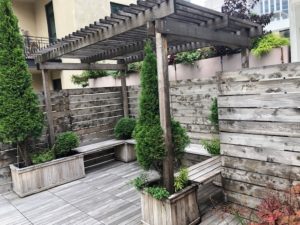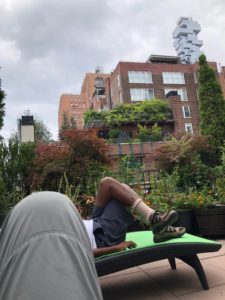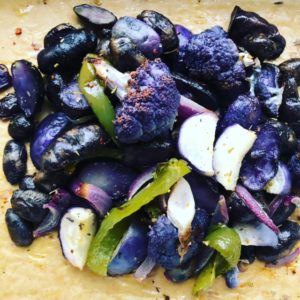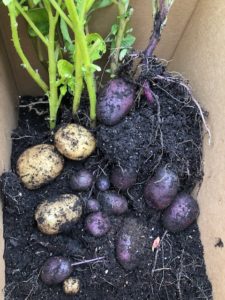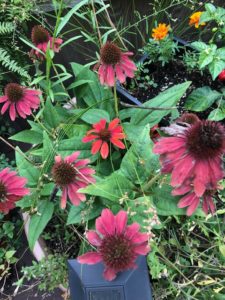 Shifting to the slow lane is the best thing about Fall gardening. I’m no longer on a schedule generated by Spring and Summer’s pace – prep seeds, soil, and containers. Now that it’s September, the harvest is mostly done, and the growing season is winding down. So let’s stop and smell the flowers and herbs and eat the bounty. It’s time to open our hearts and shift our vibrations to rest. Enjoy the plants that grew and the ones that are still growing.
Shifting to the slow lane is the best thing about Fall gardening. I’m no longer on a schedule generated by Spring and Summer’s pace – prep seeds, soil, and containers. Now that it’s September, the harvest is mostly done, and the growing season is winding down. So let’s stop and smell the flowers and herbs and eat the bounty. It’s time to open our hearts and shift our vibrations to rest. Enjoy the plants that grew and the ones that are still growing.
Slow lane lessons
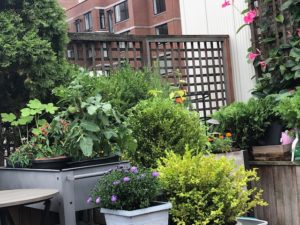
A slow lane lesson learned while living in quarantine: Every garden, whether big- a backyard or small – a window sill, patio, or roof deck- is a learning space full of mystery. There’s more to plants than you see. They are not silent, unaware beings sitting around making oxygen. Plants are like people. They have secret lives. They are sensitive and make decisions and respond to their environments. Some plants don’t like each other. As a container gardener, I had to learn about plant companionships. Yes, there are a few odd couples and happy accidents growing here.
Musical plants
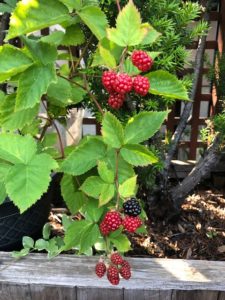
September’s slow lane groove is definitely here. But there’s jazz up here on my re-claimed roof deck teaming with plant-filled containers. Sometimes I hear John Coltrane’s rendition of ‘My Favorite Things’ playing in my head as I happily improvise and play in the dirt. Did you know that plants make music? On that note, this NPR article may interest you – https://www.npr.org/2020/02/21/807821340/the-lessons-to-be-learned-from-forcing-plants-to-play-music
“The music sounds, at first, like it belongs in a power yoga studio: electronic and rhythmic, rising and falling like breaths. But then a higher pitch juts into the mix, and the strains of sound diverge, becoming faster-paced and a bit more like electronic dance music. The rise and swell fluctuate, not entirely predictable. The artists at work are, ostensibly, plants. Plant music is coming to you, or rather, it’s there if you seek it out — and there are plenty of musicians these days waiting to be discovered.”
Plant Art
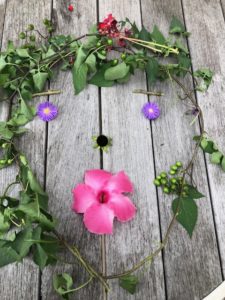
Sometimes I see people in my flowers, vegetables, and weeds. Do you ever imagine your garden as an art supply store or an art studio? I do—a table and a mat function as my canvas. Various plant stems make a fun face outline. Asparagus ferns can add to a hairstyle. Dried and fresh flowers, berries, or beans can reveal interesting characters. I created a ‘Plant People’ art series from found items in the garden. I hope to self-publish a photo calendar one day.
Every garden is a creative space. Whenever I travel, the first thing I do is visit local gardens. I believe that we’re all born artists and that all gardeners are courageous artists. Planting a garden means that you have hope. Gardens help us reclaim our artist souls. Our hearts seek art, and art speaks to our hearts.


Pisces gardening
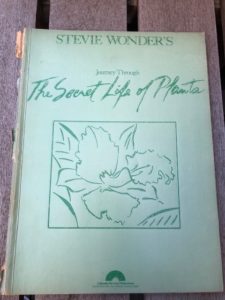
I learned how to ‘see and feel’ art from art teachers at the Brooklyn Museum. But being a Pisces person, it was always easy for me to understand how to ‘feel and see beyond’ music, art, and gardens. As a musician (piano and viola), I instinctively knew that plants were musical. Pisces is a water sign, and being the last sign in the zodiac, it combines all the astrology signs. So, naturally, a Piscean approach to everything is creative. Pisces’ water element and nurturing ways help plants to grow. But, of course, the Earth signs – Capricorn, Taurus, and Virgo – are supposed to be the best farmers and gardeners because their zodiacs are ruled by planet earth! And Fire and Air signs bring a lot to the garden party too. My Sagittarius father and Cancerian mother taught me gardening! We will get to more astrological gardening in future posts.
So, considering this water-earth sign zodiac connection, I was hoping you could take a listen to my favorite Stevie Wonder (a Taurus) cult classic, Journey Through the Secret Life of Plants.
Click here – https://www.youtube.com/watch?v=f2dDCUuJkPE
You will enjoy this swim inside Wonder’s songs, especially the title song, The Secret Life of Plants, Send One Your Love, and Power Flower.
Called a “psychedelic botanical masterpiece,” this mostly instrumental album was the soundtrack to the documentary film The Secret Life of Plants, directed by Walon Green, based on the book of the same name by Peter Tompkins and Christopher Bird.
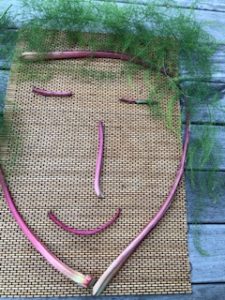
Climate change grief
Like the rest of the world, climate change affected my New York City roof garden this year. It was devastating. The crazy rainstorms and extreme heat took a toll on my baby plants. They were started from seed. A plant box nozzle got stuck and the box filled with rainwater overnight. Most of the plants drowned by the time I returned after the storm. I experienced true grief. A white-grey powder-like substance spread from the plant leaves stems to the buds and flowers. What was that? I moved the planter to an emergency zone. I needed to fix and adjust my plants and the soil a lot. It took all summer to remedy various minor and serious conditions. It’s all good now. But it was a rough summer.
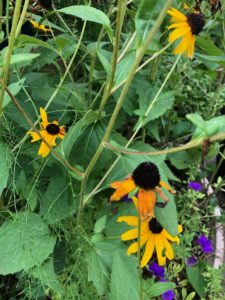
What’s still growing
Lots of things are still growing in the garden. I feel gratitude. I see bees, butterflies, and birds. My husband Byron and I are well, safe and happy. We see Sunflowers, Marigolds, Echinacea (Coneflower), Black-Eyed Susans, Mandevillas, blueberries, okra, tomatoes, peppers, alliums, shrubs, and trees. The herb garden seems invincible with thyme, oregano, rosemary, sage, and marjoram.
Purple food
My best achievement this summer was growing Peruvian purple-blue potatoes in cloth bags. It’s true what they say about home-grown veggies. Those purple potatoes were so tasty. I roasted them with fresh thyme, rosemary herbs, seasonings, olive oil with purple cauliflower, radish, red onion, and peppers. I like to play Prince’s ‘Purple Rain’ in the background while preparing my purple food platters! Do you like purple foods too? I usually post photos of my cooking and garden scenes on my Instagram, silvera88, with hashtags #blackgirlgardening, #roofgarden, #growsomething, and #purpleveggies.
Here’s the link to Prince’s ‘Purple Rain.
https://www.youtube.com/watch?v=ryT-ltTDCko
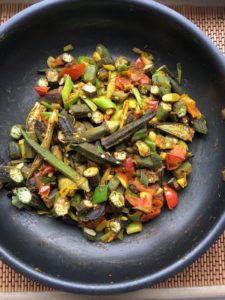
Being flexitarian
Gardens teach many life lessons. Being flexible is an important lesson. Living a plant-based ‘flexitarian’ lifestyle truly motivated me to grow food. I re-activated my ancestral farming genes. My grandparents in Ocean Springs, Mississippi, ran a dairy and truck farm. Actually, my husband Byon started it when he designed the roof. It used to be so windy and hot up there. I avoided the space. He had no plans for a ‘garden’ per see. His architects fortified the roof with a steel beam platform to create an urban roof deck. The platform gave us more flexibility and protection regarding roof weight restrictions. I think a whole new building could be built on those beams. He hired a gardener to plant hardy evergreen trees. Besides year-round color, the trees provide wind protection. After a while, I felt the call of my ancestors to do more. Stretch out. Be flexible. There are so many possibilities, no matter what your garden space may be. I started easy by adding flower bulbs, shrubs, herbs, and vegetables. Then I began searching for new containers and plants to put in them. Before I knew it, I was obsessed!
Gardening addiction
Is gardening an addiction? What are the telltale signs? Stories and photographs about Eleanor Roosevelt and Michelle Obama’s ‘Victory Gardens’ kickstarted my gardening addiction. Covid19 pandemic definitely revved up an obsession. I already amassed a collection of ‘rescue plants’ from local deli counters and grocery stores! I love garden centers and seed catalogs more than clothing stores! I canceled a Martha’s Vineyard vacation one year because I didn’t want to leave my ‘Three-Sister Garden’ project. For many Native families the three ‘sister’ crops- corn, beans, and squash, grown together in the same plot work together to thrive and survive. I also grow herbs, beans, berries, and greens. I composted my food scraps and joined a local CSA. I became active in the urban gardening movement and considered myself an environmentalist. I attend online classes and conferences. I eat mostly plant foods. These include vegetables, fruits, beans, seeds, nuts, legumes, whole grains. Sometimes I eat fish, meat, eggs, and dairy. But I choose mostly foods from plant sources. So, I’m a true flexitarian who mixes it up with Creole Soul, Afro-Asian, and Caribbean cooking. That’s a spicy Bhindi Okra Masala in the pan (above, left); a Palestinian Caribbean Afro-Asian #Globalbowl with Falafel, Vegetable Biryani rice, Trinidad Curry Channa, Szechuan Green Beans, Jamaican Callaloo (below, left); and fresh-picked speckled lima and cranberry beans from the garden (below, right).!
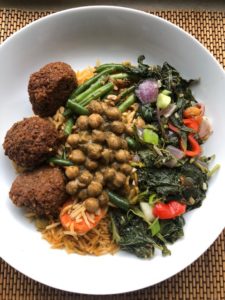
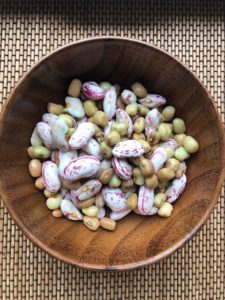
Urban sanctuary
Evergreen trees, Japanese maple trees, and shrubs in large plant boxes add a sense of serenity, beauty, and wilderness. Most of my edible and medicinal plants grow in several plant containers of all sizes and shapes. A pergola frames part of our outdoor urban sanctuary and creates a sense of height and privacy. We still live a semi-quarantine life because of the Covid19 Variant. We are blessed to go up to our roof to spend daily time outside to enjoy fresh air and sunshine. With this change in seasons, I usually do mini plant makeovers. For more winter colors, I’m exploring small bulbs to bloom in January and February. I am mentally preparing for the winter. But I’m not there yet. Right now, I’m affirming how everything is interconnected and interdependent.
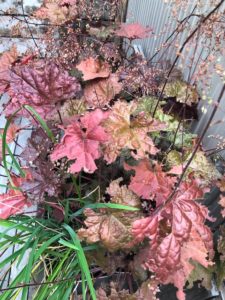
More bloom time
There are still more blooms to come. The Fall season is a lovely spiritual time that represents harvest time. Our lives go through growth cycles and seasons as seen in nature. I’m still trying to decide on some cool weather crop options. Should I plant spinach, kale, greens, bok choy, broccoli, and Brussels Sprouts again? What new perennial flower bulbs will I plant for Spring? Stay tuned.
